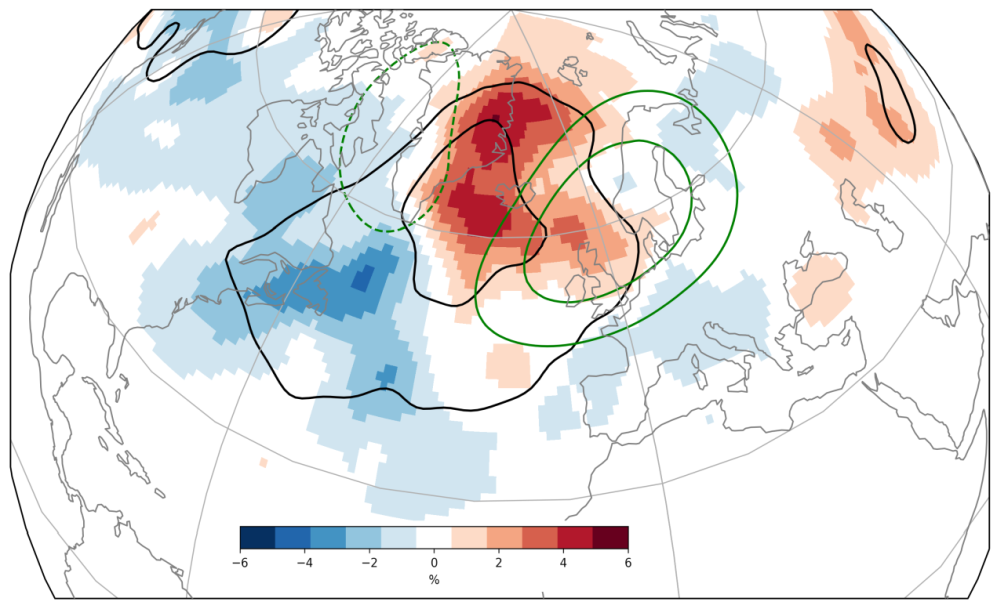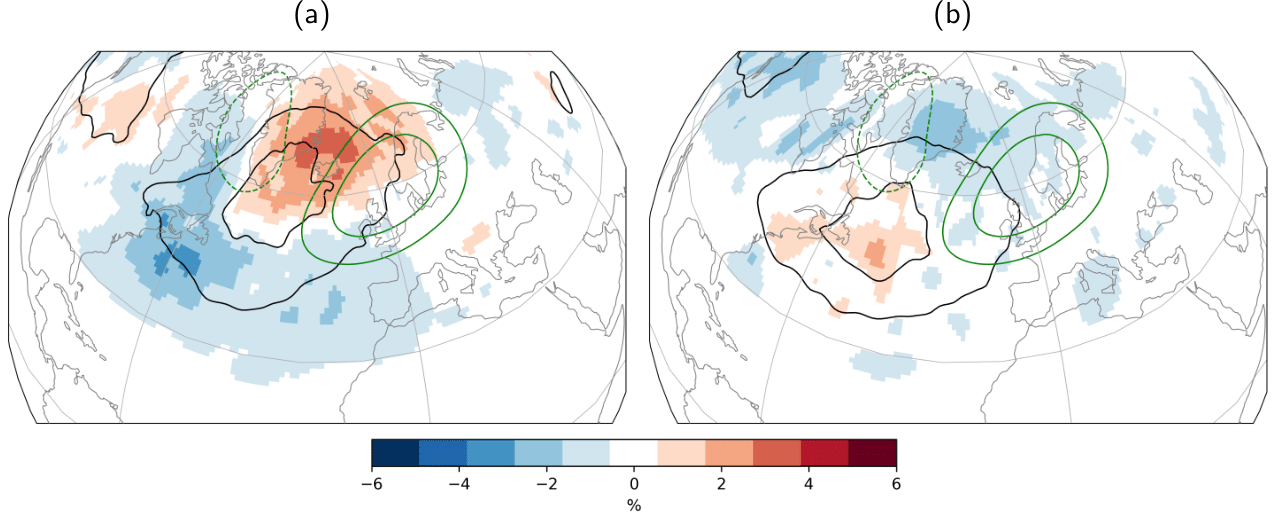In search of the culprit for mispredictions of high-pressure situations
Persistent high-pressure systems, also known as blocking, are often associated with heat waves in summer and cold air outbreaks in winter. Accordingly, reliable forecasts of these systems are of enormous importance due to the extensive socio-economic effects.

However, forecasts of persistent high-pressure systems over the European region are still challenging for numerical weather prediction (NWP) and climate models. This manifests in an underestimation of the blocking frequency or reduced forecast skill compared to other large-scale flow regimes [1]. The reduced skill partly arises from a lower intrinsic predictability [2], but might also be due to a misrepresentation of important physical processes in NWP and climate models.
A first-order process for the onset and maintenance of blocking is latent heat release (LHR) due to cloud formation [3] inside so-called warm conveyor belts (WCBs). WCBs are poleward moving air streams that ascend in the warm sector of low-pressure systems within two days from the lowest 2 km of the troposphere to altitudes of 8-12 km. Despite the impact of WCBs on blocking, the link between WCB activity and the prediction of blocking over Europe has not yet been evaluated. For this purpose, newly developed machine learning models [4] are used to compute the WCB activity in a large data set (20 years) of weather forecasts from the NWP model of the European Center for Medium-Range Weather Forecasts (ECMWF).
Around the onset of blocking over Europe, WCB activity is strongly enhanced over the western part of the developing block (Fig. 1). In the NWP model, the WCB frequencies are underestimated across different time scales which indicates that the WCB potentially plays an important role for the overall low forecast skill of blocking over Europe. The WCB activity is better represented during blocking events which are well predicted by the model (Fig. 2a) and strongly underestimated for events with low predictive skill in the model (Fig. 2b). Further investigations show that the underestimation of WCB activity is especially pronounced over the eastern North Atlantic and western Europe prior to the onset of the block [5]. Consequently, the model establishes the block via a different pathway with high WCB activity over the central North Atlantic instead.

Literatur:
[2] Hochman, A., Messori, G., Quinting, J. F., Pinto, J. G., & Grams, C. M. (2021). Do Atlantic‐European Weather Regimes Physically Exist?. Geophysical Research Letters, 48(20), https://doi.org/10.1029/2021GL095574
[3] Pfahl, S., Schwierz, C., Croci-Maspoli, M., Grams, C. M., & Wernli, H. (2015). Importance of latent heat release in ascending air streams for atmospheric blocking. Nature Geoscience, 8(8), 610-614, https://doi.org/10.1038/ngeo2487
[4] Quinting, J. F., & Grams, C. M. (2022). EuLerian Identification of ascending AirStreams (ELIAS 2.0) in numerical weather prediction and climate models–Part 1: Development of deep learning model. Geoscientific Model Development, 15(2), 715-730, https://doi.org/10.5194/gmd-15-715-2022
[5] Wandel, J., Quinting, J. F., Büeler, D., Knippertz, P., Grams, C. M. (2022). Why moist dynamic processes matter for the prediction of atmospheric blocking over Europe, in revision
[6] Wandel, J., Quinting, J. F., & Grams, C. M. (2021). Toward a Systematic Evaluation of Warm Conveyor Belts in Numerical Weather Prediction and Climate Models. Part II: Verification of operational reforecasts. Journal of the Atmospheric Sciences, https://doi.org/10.1175/JAS-D-20-0385.1
3.6.2022
Jan Wandel, Arbeitsgruppe: “Großräumige Dynamik und Vorhersagbarkeit” LINK: https://www.imk-tro.kit.edu/english/7425.php
